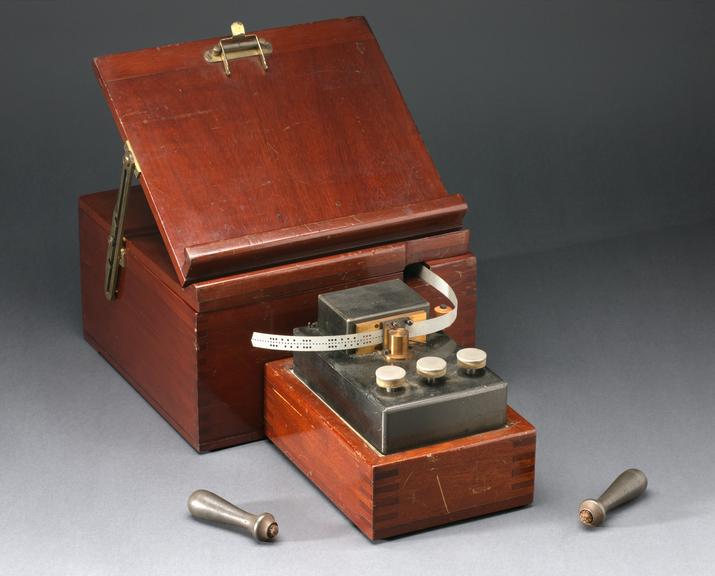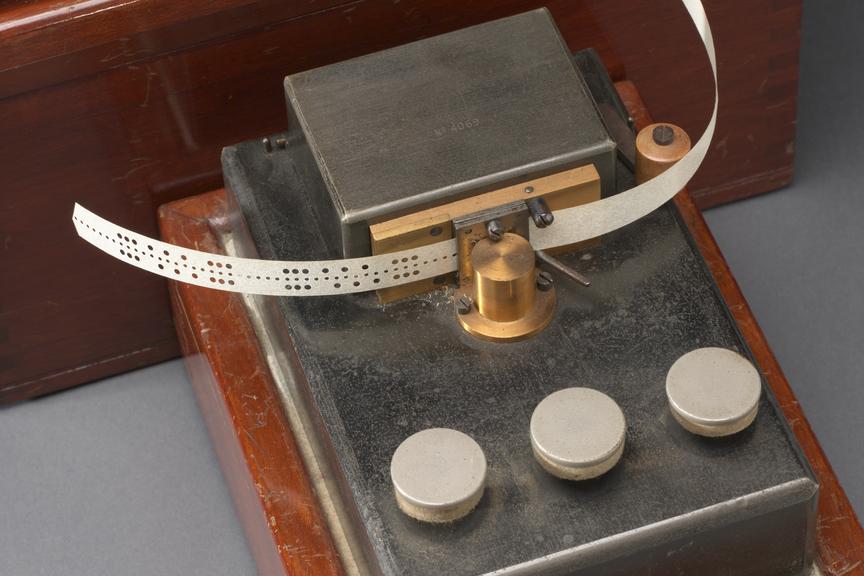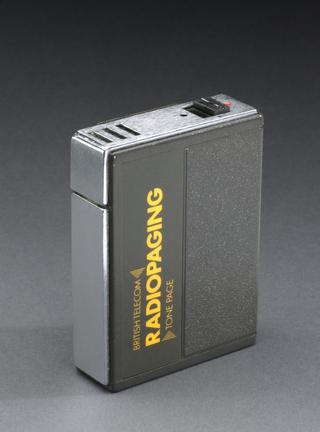
Hand perforator and copy stand for Wheatstone automatic telegraph system, 1890-1910
- Made:
- 1890-1910 in United Kingdom
- inventor:
- CHARLES WHEATSTONE




Hand perforator and copy stand for Wheatstone automatic telegraph system, invented by Charles Wheatstone, unknown maker, probably British, 1890-1910. Wheatstone two unit stickpunch with paperslip dispenser.
In the 1850s and 1860s Sir Charles Wheatstone developed systems for the automatic transmission of telegraph messages. These systems used punched paper slip (tape) which was prepared in advance using this manual puncher. The operator, reading the message from the copy stand, used small hammers to press the buttons which punched Morse code into the tape. From the left the buttons are dot; space; dash. This method was faster than manual sending, as the message could be preprepared before being sent at high speed, making maximum use of the line.
Credit: BT Heritage and Archives [IA project 26/2/14]
Details
- Category:
- Telecommunications
- Object Number:
- 2004-126
- Materials:
- paper (fibre product), metal (unknown), wood (unidentified), iron and copper (alloy)
- Measurements:
-
overall: 315 mm x 260 mm x 485 mm, 3.31kg
- type:
- telegraph
- credit:
- Donated by BT Heritage and Archives [IA project 26/2/14]




